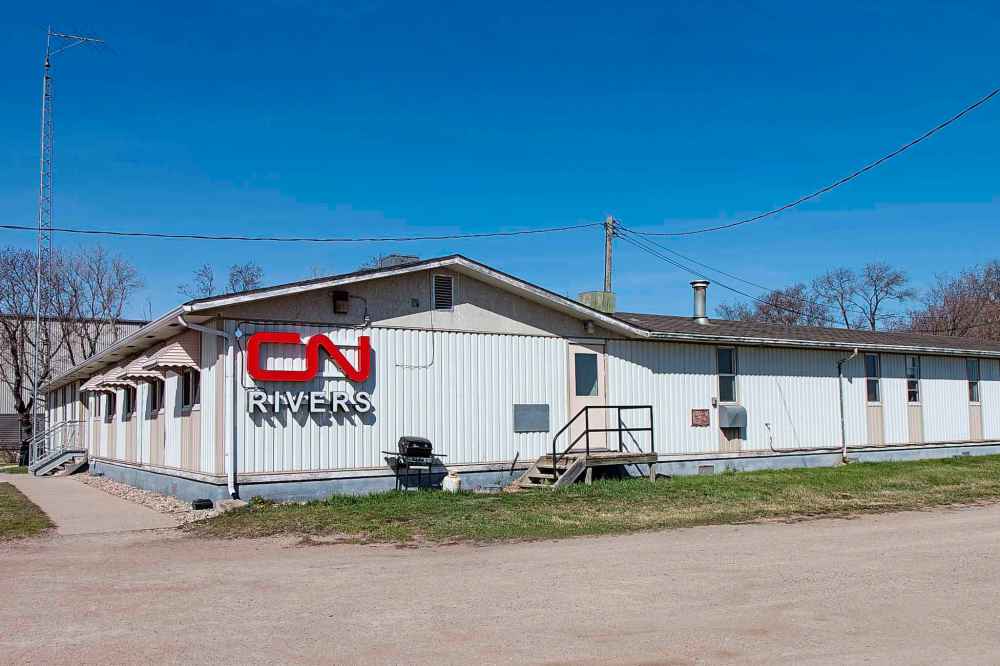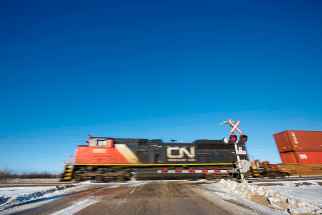Exhausted, sleep-deprived workers on trains in Manitoba, reports reveal
Read this article for free:
or
Already have an account? Log in here »
To continue reading, please subscribe:
Monthly Digital Subscription
$0 for the first 4 weeks*
- Enjoy unlimited reading on winnipegfreepress.com
- Read the E-Edition, our digital replica newspaper
- Access News Break, our award-winning app
- Play interactive puzzles
*No charge for 4 weeks then price increases to the regular rate of $19.00 plus GST every four weeks. Offer available to new and qualified returning subscribers only. Cancel any time.
Monthly Digital Subscription
$4.75/week*
- Enjoy unlimited reading on winnipegfreepress.com
- Read the E-Edition, our digital replica newspaper
- Access News Break, our award-winning app
- Play interactive puzzles
*Billed as $19 plus GST every four weeks. Cancel any time.
To continue reading, please subscribe:
Add Free Press access to your Brandon Sun subscription for only an additional
$1 for the first 4 weeks*
*Your next subscription payment will increase by $1.00 and you will be charged $16.99 plus GST for four weeks. After four weeks, your payment will increase to $23.99 plus GST every four weeks.
Read unlimited articles for free today:
or
Already have an account? Log in here »
Hey there, time traveller!
This article was published 07/01/2019 (2532 days ago), so information in it may no longer be current.
OTTAWA — CN trains travelling across Manitoba are being operated by overtired railway staff who are unable to take their mandated rest breaks, with some even falling asleep while on shift.
Fatigue is one of a handful of rail-safety issues the Free Press uncovered after obtaining complaints filed by rail workers with the Transportation Safety Board — complaints the watchdog deemed serious enough to flag for CN Rail.
The issue largely surrounds scheduling breaks for rail workers crossing the country on multi-day trips, on lines increasingly used to transport crude oil.

In a December 2016 letter, the TSB raised a whistleblower’s report of rail staff arriving at the CN bunkhouse in Rivers who “encountered situations where all of the rooms at the rest facility are occupied,” and were sent 40 kilometres away to hotels in Brandon. The complainant claimed that CN supervisors were counting as much as 90 minutes of travel back and forth between the hotel and the railway as part of the staff’s allotted sleep time.
The issue re-emerged 12 months later, when the TSB received two complaints that staff arriving at Rivers “are being instructed to book off-duty and commence their rest period, even when the bunkhouse is full and no rooms are available.”
The allegations involved crews based out of Winnipeg and Melville, Sask., some of whom ended up sleeping on couches and kitchen floors, according to sources familiar with the decades-old Rivers bunkhouse.
The facility sits near one of Canada’s busiest rail lines, housing dozens of rooms with individual beds.
“While waiting for rooms, these employees remain in the common areas of the facility,” the TSB relayed. “In one situation, the wait time (before a room became available) was four hours.”
The TSB has documented rest issues for Manitoba rail staff for years, which have persisted until at least this past summer. In July, the TSB relayed an incident involving Winnipeg CN crews travelling to Minnesota. The employees claimed they weren’t being given the 10 hours of rest required under American laws upon reaching a rest facility in International Falls, Minn., on the border with Fort Frances, Ont.
In one alleged incident along that line, staff worked 15 hours, and were granted a total of eight hours break at the facility before heading back to work.
That chunk of time includes leaving the train, preparing for rest, sleeping and then preparing for the workday. Sleep researchers have long suggested humans need time to ease into sleep, and should get seven or eight hours of shuteye.
The TSB, an independent body that probes systemic risks and alerts the regulator, Transport Canada, has identified fatigue in 93 of its investigations since 1992, a third of which involve trains.
The watchdog has listed rail-worker fatigue as one of Canada’s top safety risks for two years, and last fall it expanded its watchlist to include fatigue issues among air and marine workers.
TSB chair Kathy Fox said the problem is not just the amount of sleep workers get, but also companies providing guesthouses with too much noise and light to get a decent rest. Meanwhile, federal rules say companies have to schedule shifts that account for “accumulated sleep debt” and accommodate circadian rhythms.
“This has to be approached from a more modern, holistic, scientific perspective,” Fox told reporters last October.
“There’s a lot that needs to be done for how these are scheduled, and how long the shifts are, and how much rest you need in between to really recover.” – Transportation Safety Board senior member Faye Ackermans
In fact, an internal May 2018 memo obtained by CBC News had Transport Canada officials warning federal rail-worker rules that were last updated in 2002 “are not effective in preventing fatigue due to work schedules, and do not adequately mitigate the risks of fatigue.”
The note cited “a patchwork of approaches, most of which are outside (Transport Canada’s) control.”
TSB senior member Faye Ackermans said one of those is the constantly changing work schedules for rail employees.
“They don’t know when exactly they’ll be called into work, so they might wake up in the morning fully rested, but they might wait six or seven hours for the call to work. And by the time they get to work, they might be pretty tired because they’ve been up for so long,” she said.
“There’s a lot that needs to be done for how these are scheduled, and how long the shifts are, and how much rest you need in between to really recover.”
Such fears emerged in a TSB warning from November 2017. A tipster reported to the agency that that CN “operating employees” in Winnipeg were too afraid to report being unfit for work, even if they hadn’t had enough sleep.

In one case earlier that year at Symington Yard, a whistleblower claimed that “CN officials discovered the employee asleep and woke up the employee. The employee was allowed to complete the shift and there were no further sleep events for the employee during that shift.” The TSB told the Free Press this involved an employee at the yard in the cabin of a train, who was likely keeping watch as a colleague outside the train moved it using a remote-control belt pack.
The tipster also claimed that CN had investigated 36 employees in Winnipeg who said they were unfit to work — that can mean anything from being too tired to work to having a medical issue — and even disciplined 19 of them.
NDP MP Daniel Blaikie said he regularly hears concerns about worker fatigue from labour groups affiliated with all three major railways operating in the city, not just in his Transcona riding.
“Anyone who’s been stuck in traffic in Winnipeg by a train knows that there’s a lot of oil cars moving through Winnipeg, on both train lines,” said Blaikie, who’s particularly concerned about the railways and railyards “sandwiched right in the middle of the city.”
The amount of oil being transported on rail is increasing, with Canadian exports of crude to the American Midwest doubling this fall, raising concerns about Canada’s safety oversight. Just last Thursday, two trains collided near Portage la Prairie, with one leaking diesel and the other carrying hazardous goods. The incident remains under investigation, and it’s unknown whether fatigue played a factor.
Transport Minister Marc Garneau maintains that safety is his top priority, and his department cites progress on rail safety, like phasing out riskier train cars.
In late December, Garneau ordered rail companies to update their rules around rest periods, shift duration and advance notice for scheduling. Those rules are due in May, and Ottawa will take a month to review them.
A year prior, Garneau issued a notice that his government would start consultations on updated regulations, which prescribe standards on companies instead of crafting them together. His department commissioned research on fatigue science, but it won’t be completed until at least February.
Last October, the TSB called for “a profound change in attitudes and behaviours” to prevent fatigue. Garneau told the Free Press last month that such regulations will take time to craft.
“We are working in an expeditious manner, but when you have to do something as important and as big as this, you have to do the necessary consultation — not only with the railways, but also with the unions, with the academic world, so that we make the best decisions.”
CN referred queries to the Railway Association of Canada, which wrote that its industry is committed to safety, with the group hosting “medical advisory group” that looks into the causes of fatigue issues and how to mitigate risks.
“RAC believes that fatigue is a matter requiring empirical evidence and a scientific approach to identifying and delivering effective solutions to address fatigue in the workplace,” wrote spokesman Michael Gullo.
Fox said the clock is ticking:
“Promising action is not the same as delivering it, especially when the plain truth is that inaction can cost lives.”
dylan.robertson@freepress.mb.ca
This is the final instalment in a three-part series examining safety issues along Winnipeg’s rail lines, amid a historic rise in the volume of oil being shipped on trains.
Transportation Safety Board documentation on Winnipeg rail fatigue issues
History
Updated on Monday, January 7, 2019 10:25 PM CST: Fixes spelling of name.












